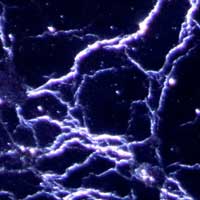 This discovery may be fundamental for the understanding and design of new, nanometric size, opto-electronic devices which will be key for the development of new technologies based on quantum properties, such as sensors or quantum computers.
This discovery may be fundamental for the understanding and design of new, nanometric size, opto-electronic devices which will be key for the development of new technologies based on quantum properties, such as sensors or quantum computers.
Wednesday, March 25, 2020
A new method for the fabrication and characterization of atomic-sized photonic cavities
 This discovery may be fundamental for the understanding and design of new, nanometric size, opto-electronic devices which will be key for the development of new technologies based on quantum properties, such as sensors or quantum computers.
This discovery may be fundamental for the understanding and design of new, nanometric size, opto-electronic devices which will be key for the development of new technologies based on quantum properties, such as sensors or quantum computers.
3D-Printing complex nanocellulose-based objects
 Researchers have demonstrated 3D printed complex objects with higher cellulose content than that of any other additively manufactured cellulose-?based parts. To achieve this, they used a clever trick.
Researchers have demonstrated 3D printed complex objects with higher cellulose content than that of any other additively manufactured cellulose-?based parts. To achieve this, they used a clever trick.
A nanoscale device to generate high-power Terahertz waves
 Researchers have developed a nanodevice that operates more than 10 times faster than today's fastest transistors.
Researchers have developed a nanodevice that operates more than 10 times faster than today's fastest transistors.
'Whiskey webs' are the new 'coffee ring effect'
 The 'coffee ring effect' has fascinated scientists for decades, but now a team says they have uncovered the mechanism behind an even more striking, web-like pattern that forms when drops of whiskey dry up.
The 'coffee ring effect' has fascinated scientists for decades, but now a team says they have uncovered the mechanism behind an even more striking, web-like pattern that forms when drops of whiskey dry up.
First ultra-low threshold continuous-wave lasing in Germanium-Tin
 Researchers have implemented a new material engineering method to fabricate a laser microdisk in strained Germanium-Tin (GeSn) alloy. They demonstrate for the first time the laser device with a group IV compound, compatible with Silicon, operating with ultra-low threshold and under continuous wave excitation.
Researchers have implemented a new material engineering method to fabricate a laser microdisk in strained Germanium-Tin (GeSn) alloy. They demonstrate for the first time the laser device with a group IV compound, compatible with Silicon, operating with ultra-low threshold and under continuous wave excitation.
Shifting dimensions: Exciting excitons in phosphorene
 Scientists have shed light on how excitons - an excited state of matter at the core of optoelectronics - move and interact within phosphorene.
Scientists have shed light on how excitons - an excited state of matter at the core of optoelectronics - move and interact within phosphorene.
Subscribe to:
Posts (Atom)
